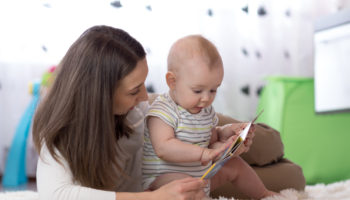More kids are growing up socially withdrawn and even depressed because they form a habit of bottling up their thoughts and feelings. A study on NCBI indicates that this is usually a result of impoverished interpersonal communication where parents and guardians are usually either over- or under-involved. Therefore, a more intimate connection between guardian and child needs to be forged where both can freely share their emotions.
Here are some tips on how to teach a child to speak their mind.
Practice reflective dialogue
What do you say to children when they hurt themselves? The typical response may be “I told you so”’ or “don’t do that again.” While these responses are fine, they fail to consider the child’s experience. You simply provided an assessment, but didn’t ask what the child was thinking or feeling. Instead of a knee-jerk response, experts suggest reflective dialogue. It refers to a type of communication that ‘reflects’ on the inner, mental world by way of conveying carefully thought out words.
Rather than the aforementioned responses, consider saying “That must have hurt, how are you feeling?” or “I was thinking of you as you were doing that and thought that you might hurt yourself. Let’s be more careful next time.” This allows you and your child to connect not only with words and events in the external world, but also with feelings in the ‘inner world’ of thought.
A faculty member of UCLA School of Medicine explored the effects of reflective dialogue, and notes that it develops what’s known as ‘mindsight’. Dr. Daniel J. Siegel states that it is the ability of a person to perceive our minds and other people’s minds as well.
As people grow older, they develop mindsight by imagining what the other person may be thinking or feeling. They then base their behavior around this perception. Mindsight is actually the basis of emotional intelligence, something that we aim to develop in children as they grow.
Lead by example
Children learn best by example, so if they see you speaking your mind, whether it is at home or outside, they will pick it up. The way adults deal with emotional situations – may it be theirs or others’ – shapes a child’s response to emotions.
This is also the case even with positive verbal acts such as praise. As we have previously discussed here on PQA, children know when an adult is being sincere or not. Therefore, we need to learn how to become a good conversationalist. This includes being open, honest, spontaneous, but also aware of the needs and limits of specific social contexts.
Don’t stop at verbal communication
Connecting with other people has become much more varied and complex because of developments in technology. These dynamic shifts in how people communicate with each other are explored in Maryville University’s Communications program post, and social media is a very relevant example, as the platform, in general, gives everyone a channel to express their thoughts and feelings. Communication in social media is not limited to commenting on other people’s post or sharing content. It includes creating new content, whether it is as simple as a meme or a full-on YouTube video.
Guiding kids on how to use social media should be every parent’s duty as the internet is like the Wild Wild West at times. Children should not just be taught to express themselves but also to learn when, where, why, and how they can participate in a digital space.
Feature article written by Natalie Kiefer
Exclusively for programqualityassessmentinpa.com
Author bio: Natalie Kiefer is a community worker who frequently engages in freelance projects after her day job. She volunteers at local orphanages during weekends and has guided kids for most of her adult life.



